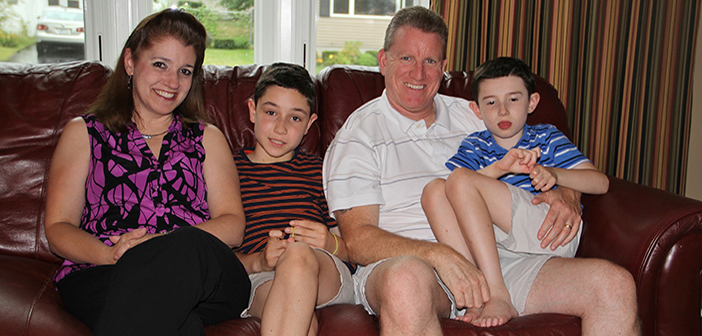With individual attention and therapy, a family navigates life with autism.
Lisa and Carl Lavin never expected to take this journey. It began more than a decade ago, when they noticed that their first-born, Shane, was not as verbal as other kids his age: his vocabulary, at 2, consisted of only about six words. He was “doing some quirky things—movement, some flapping,” says Lisa Lavin, of Riverside. After a pediatric consultation and testing at Hasbro Children’s Hospital, Shane was diagnosed with global developmental delay.
The next year, however, the family saw no significant improvement: Shane’s vocabulary plateaued and his socialization was minimal. His parents brought him in for retesting. This time the results were different: autism. “It was devastating,” Carl Lavin says. “When you have children you have this vision of what their lives are going to be like and the paths they are going to take. That vision is completely changed.”
By the time Shane received his new diagnosis, Lisa had already given birth to their second son, Austin. “He was a little over 1 and we could see the lack of engagement,” she says. “We said, if you are considering Shane to be on the spectrum, then we have no doubt that Austin is, too.”
The Hassenfeld Child Health Innovation Institute, funded by the Hassenfeld family and led by Brown University in collaboration with Lifespan and Care New England, researches factors that impact children’s health, including autism, and conducts community outreach.
“Our team does careful diagnostic work,” says Stephen Sheinkopf, PhD, associate professor of psychiatry and human behavior (research) and of pediatrics (research). “We measure aspects of physiology and markers of core deficits in autism, seeking to better identify risks and early intervention and better measure responses to treatments.”
Eric Morrow, MD, PhD, associate professor of biology and of psychiatry and human behavior, is a leader in research to find the genetics and cell biology that contribute to developmental disabilities like autism. Understanding the basic science of genetic abnormalities found in some people with autism could lead to a more complete understanding of the causes—and potentially to therapeutics.
Early intervention, individualized treatment, and innovative therapeutics are exactly what the Lavins need for their sons. The couple relies on their pediatrician as well as a host of agencies and specialists. University clinicians and researchers—including Sheinkopf, through the Brown Center for the Study of Children at Risk—have been working with the family for years.
“Shane has come a long way, from saying five words to pretty much non-stop talking and questioning,” Lisa Lavin says. He even plays on a local Little League team.
Though Austin is still basically nonverbal, she says therapy has helped him dramatically. “Before, Austin wouldn’t play with toys, wouldn’t get involved with anything,” she says. “Now his life is simple but there are many things he enjoys, like playing outside and anything to do with water”—like surfing. “You can see it in his face. He’s developed a personality that wasn’t there before.”




